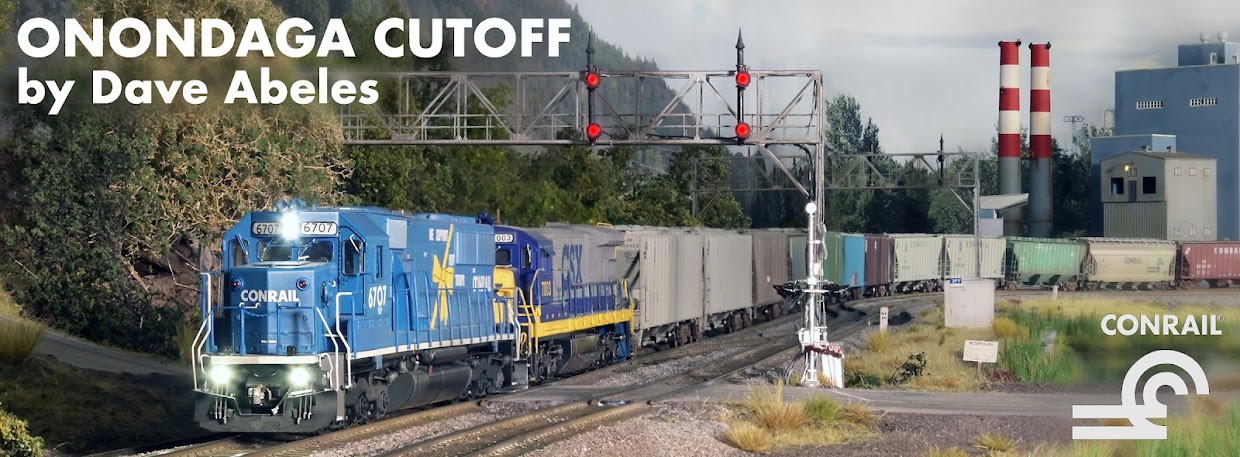A few quick photos from the iPhone will help illustrate. Here's a shot of CP282, an area that has yet to receive its final installation of signals, and as such it's an area that has yet to be fully weathered. As a result, while the installation of track is sound and operates smoothly, the appearance is distracting and disjointed.
My procedure for weathering track involves masking all switch points and joints, as well as lineside details that I don't want to cover with paint at this point. Once the masking is in place, I set up fans for ventilation, and apply an overspray of rail brown from Floquil. I immediately wipe down each rail head with a rag soaked with paint thinner, and then remove the masking. Once the overspray cures for a few minutes, I can go back with a BrightBoy abrasive cleaning block to polish the rail heads. Finally, I go back and hand-paint some of the ties different shades of brown to suggest ties of different ages. Here's the result, recently completed at CP277. Ballast will tone down the uniform look of the roadbed, but the ties and rail will remain.
I think it's a dramatic improvement, and it's even more evident in person, seeing the change all at once. CP277 will receive ballast soon too, which will again improve the appearance dramatically.
Finally, a shot of some light power coming west through CP277, to give you a sense of how the new weathered track looks with clean Conrail blue:
Thanks as always for your viewing and comments! Upcoming projects include several new additions to the locomotive fleet, and also the big conclusion of the signal system installation: an intermediate bridge at MP 278, and all the signals at CP282. It's a total of 30 heads, which is a lot of work, but the finish line draws closer and closer!
~RGDave





No comments:
Post a Comment